The history of creation.The East Kazakhstan Regional Library named after A.S.Pushkin was founded on March 20, 1896 on the initiative of the Society for the Care of Public Education. At that time, the library was called the Ust-Kamenogorsk National Paid Library with a reading room. On the title pages of the library's publications of that time there is a stamp with the name and date "1896". The initial library fund consisted of personal books by members of the Society O.Kostyurin, V.Gintovt-Dzevaltovsky, E.Michaelis, I.Emeliantsev, A.Fedorov, G.Vistenius, etc. The library was located in the building of the city council.
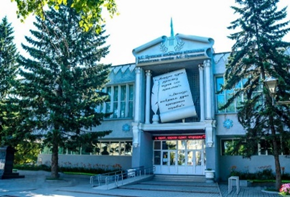
By the end of 1898, 2 years after the opening, the library had 830 volumes of books, 384 volumes of periodicals from 33 titles. This resource was used by 428 readers. The library has become a center uniting the urban intelligentsia.
In 1902, the People's House was built with donations from the townspeople, where the library moved.
By the beginning of the First World War in 1914, there were already about 2,000 books in the library. A fee of 50 kopecks was charged for use.
After the establishment of Soviet power in the 1920s, the library-reading room of the city of Ust-Kamenogorsk became a public city library. The book fund gradually increased and in 1920 the fund numbered 5,000 copies of books.
The library owes its name to the active public of the city, which petitioned for the naming of A.S. Pushkin library. In the year of the centenary of the death of Alexander Pushkin, on August 19, 1937, the presidium of the Ust-Kamenogorsk City Council decided to assign the name of the great poet to the city library. And two years later, the East Kazakhstan region stood out from Semipalatinsk and the library acquired the status of a regional one.
During the Great Patriotic War (1941-1945), the library did not stop its work, the Ustkamenogorians nicknamed it the "nomadic" library.
On the eve of the new year in 1984, the city authorities decided to move the VK regional library named after A.S. Pushkin to a new building on Ushanova Street (now Kazakhstan Street), where the library is located to this day.
The beginning of the 90s. in a difficult time, the time has come for drastic changes. A center for the latest information technologies and educational services covering all areas of human activity is being opened. The Association of Librarians of the East Kazakhstan region was established. Members of the Association participated in international conferences in Crimea, world congresses of IFLA librarians in Turkey, the Netherlands, Germany, Norway, the Republic of Korea, Canada, and Sweden.
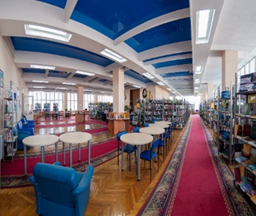
One of the numerous projects of the Association is the Summer Library Internet School, which started in August 1999.
Currently, along with the achievements of new information technologies, traditional forms of work are also taking place in the library. Many of the library's projects are implemented in partnership with international organizations and foundations of the Embassies of the USA, France, Germany, the Open Society Institute, the international Eurasia Foundations, etc.
The library is the main information and cultural center of the East Kazakhstan region.
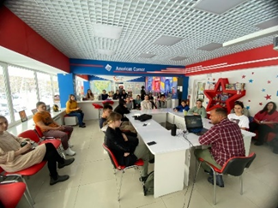
The library's collection is 379,353 copies.:
Books – 240,300 copies; Electronic editions -7,623 copies.;
Film and photo documents – 3,220 copies.;
Periodicals – 128,153 copies.;
Other literature – 57 copies.
The fund in the state language – 98,698 copies.:
Books – 69,489 copies.;
Electronic editions -1,654 copies.;
Periodicals – 27,482 copies.;
Other literature – 41 copies.
Unique editions are tactile handmade books made of felt, fabric and yarn, made by librarians and members of library circles.
Rare fund – 1,167 copies.;
Books – 1,129 copies. (in the official language – 153);
Periodicals – 38 copies. (in the state language – 10);
Electronic editions – 0 copies.;
Translated into digital format – 967 copies.
East Kazakhstan Regional Special Library for blind and Visually impaired citizens
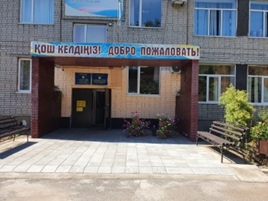
1969 – the opening of the library.
1970 – the beginning of the creation of a network of library centers in the region.
1971 – the first reel-to-reel tape recorders "Daina" and voiced books were received.
1984 – the first Proton and Legend cassette recorders were received.
1995 – moving to a new building (11/1 Novatorov Street).
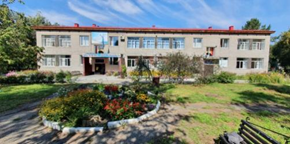
1996 – the first computer was purchased under a grant from the Soros – Kazakhstan Foundation.
2001 – the Infa-200 reading machine and 15 Magnit typhoon recorders were purchased under a grant from the Canadian Foundation.
2005 - the INFA – 100 reading machine was purchased, thanks to the Department for the Coordination of Employment and Social Programs.
General Fund 70971
Literature in relief-dotted Braille -19644
East Kazakhstan Regional Children's and Youth Library
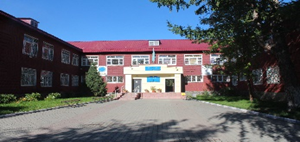
The East Kazakhstan Regional Children's and Youth Library has been conducting its history since 1939. It was then in Ust-Kamenogorsk that a structural unit with a separate room was allocated in the Pushkin Regional library to serve children readers. Soon it gained independence and until 1959 the library operated as the "City Children's Library No. 1".
In 1959, he received the status of "Regional Children's Library".
In 1964, the library was named after the children's writer A.P. Gaidar in connection with the 60th anniversary of his birth.
The changes in society associated with the acquisition of state sovereignty imposed new requirements on the organization of library activities. Therefore, starting in 1996, new departments were created in the library, which helped to improve the quality of events, establish work on local history, and increase the number of readers.
In 2000, the library received a detached 2-storey building. At that time, the library's collection already amounted to more than 140,000 items.
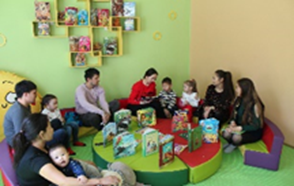
With the expansion of the library area, new opportunities appeared: staffing increased, the library staff expanded, which led to the reorganization of structural divisions.
In 2001, a "Psychological support Service for children, adolescents and youth" and a "Sociological Service" appeared in the library.
In 2003, the library received the status of "Regional Children's and Youth Library", which affected its functions. It has become an information and methodological, advisory and coordinating center for libraries of the East Kazakhstan region serving children and youth.
In 2018, VK ODYUB initiated an International Internet competition popularizing the work of writers of the region, which became an image project.
2019 was declared the Year of Youth, due to the demand of time, a Youth Center was opened in the library, which implemented the idea of creating a multifunctional room for young people with new thematic areas and dialogue platforms.
To date, all conditions have been created in the library to improve the professional skills of employees. Creative contests are held annually, and work experience is exchanged. Communication has been established with libraries from Russia, Kyrgyzstan, and Belarus. The library's activities are often covered on the pages of regional and republican media.
VK ODUB cooperates fruitfully with educational institutions of the city, pays great attention to work with social and rehabilitation centers, and has established strong relations with cultural institutions of East Kazakhstan region.
The foundation of the library's collection, which includes more than 162,000 publications, is a unique collection of children's literature from the end of the XX century. Books with autographs of the authors, as well as publications that make up the rare collection of the library, are especially valuable.
Today, the library offers virtual services for its users, which are available through the website www.vkolibrary .kz, and social media pages help the library become closer to its reader
The total fund is 160,892 copies.
Unique editions-51 copies.




